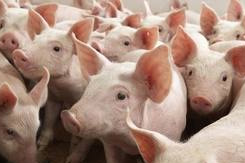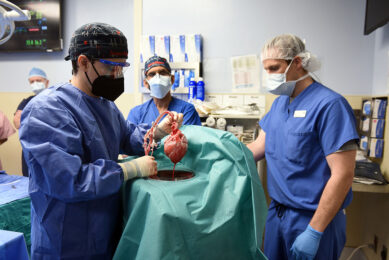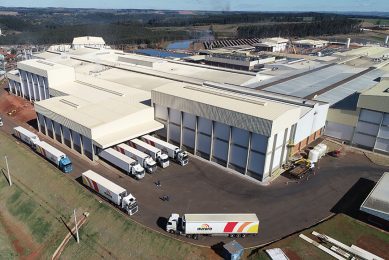Keeping pigs comfortable during high heat, humidity

As the temperature and humidity level rise outside, producers need to address animal comfort indoors. Iowa Pork Industry Center interim director Jay Harmon said it’s the combination of air movement and wetting that help pigs.
Wetting pigs is imperative because pigs don’t truly sweat like humans so. Wetting pits is like giving them some artificial sweat.
“During high temperatures, pigs can’t lose much heat from their skin because their skin is nearly the same temperature as the air around them,” he said. “Evaporation becomes very important because it’s the evaporation that cools pigs, not the wetting, and using air movement helps accelerate the evaporation so cooling is more effective.”
Harmon, who also is a professor and livestock housing specialist in agricultural and biosystems engineering at Iowa State University (ISU), said that if cycle times on sprinklers are changed, they should shorten the time between sprinkling.
“It doesn’t take any longer to wet a pig in the heat versus at cooler temperatures, but the goal is to let pigs dry between cycles and then rewet,” he said. “This allows evaporation to take place.”
In addition, maintaining summer ventilation levels in buildings is very important. Harmon remains producers to check fan belts and maintain fans on a regular basis.
Two online sources of information offer more information on swine housing environment and heat stress indices: The Environment in Swine Housing by Steve Hoff of ISU and Livestock Industry Facilities and Environment: Heat Stress Indices for Livestock by Harmon and Hongwei Xin, also of ISU.











